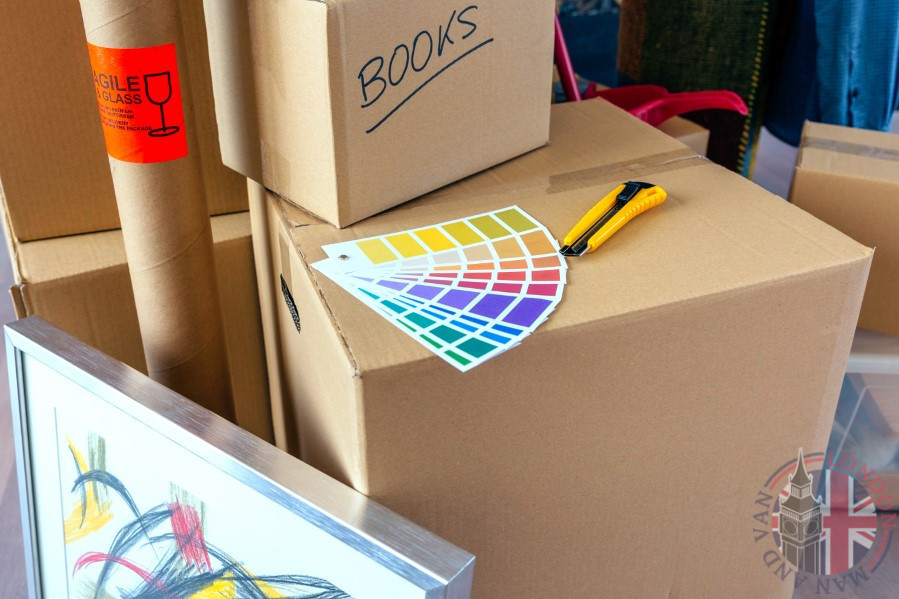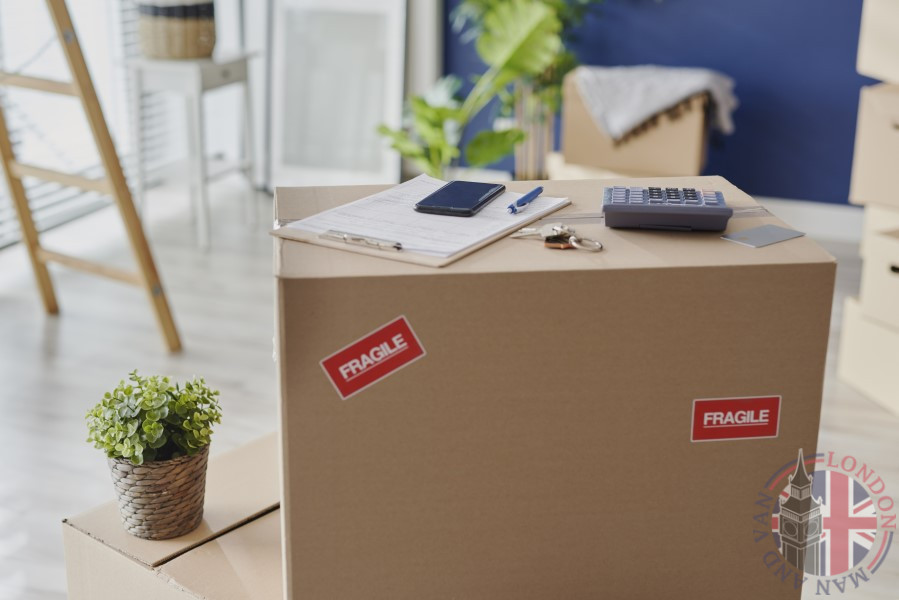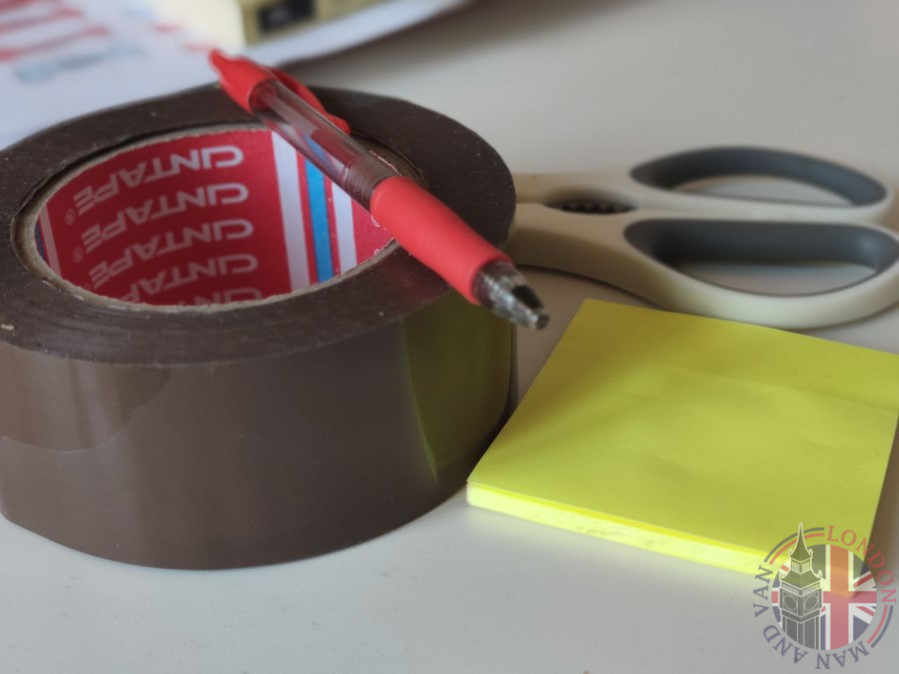
How to Label Moving Boxes: Full Guide So You Don’t Stress Out Come Moving Day
Yes, yes, moving is one of the most stressful experiences every single one of us has to go through at least once in their lives – we all know that. But do you know what adds to the hassle of having to relocate to a new home, whatever the reason for? Not knowing how to label your moving boxes properly can surely lead to accidents during transportation, which is one of the main reasons for added stress.
Having the right moving supplies and the needed quantities, such as boxes, tape, and markers, is essential to ensure a smooth packing and labeling process.
This is good news actually, because now that you know a packing and labelling system is a must, you can make the process quite easier. Learning how to label moving boxes isn’t that hard, but it will definitely contribute to your relocation to the new home come moving day becomes much smoother. All you need is a few simple tips on how to label moving boxes and you will make the transportation and unpacking simple. You will avoid a lot of confusion in the process, as well as risks of accidents a well.
Prepare the Essentials First
You cannot just hope to achieve optimal results in creating the ultimate labelling system if you don’t have the right labelling materials close at hand first. Gather all your packing materials, including boxes, tape, markers, and labels, to be absolutely sure you have everything you need before you start. So, make sure that you have plenty of:
- Packing tape for securing labels
- Colored markers for color coding (permanent markers work best)
- Stickers and colour paper for color coding
- Colour tape for securing labels and reinforcing the color-coded system
- Printable moving box labels, or ready-made box labels
- Bubble wrap to further secure Fragile boxes
- A master inventory list – you can print it off the Internet or just make one yourself to keep track of box numbers and their contents
Tailor the Labelling system
The right labeling strategy will help you label boxes effectively and make unpacking much easier than it could be potentially. The first step would be to decide on a good color coding system. The principle is simple – you need to choose different colors for each room. Then, just use color tape and color paper to match a destination room to the boxes that will go in it.
Incorporating effective labeling methods into your packing process will facilitate organization during both the packing and unpacking stages.
In addition to color coding, decide on a box numbering system as well. In your inventory list, write each box number and mark down its content. A system like that will help you track all your possessions and make sure nothing gets lost.
Use multiple sides labelling, which means that you need to write the content of each box on multiple sides. Having the contents visible on at least one side will make it easier to sort them out no matter how you stack them.
Don’t Forget to be Clear and Precise
The permanent markers that you get in the beginning of the process will come in handy when you need to write the relevant information on each moving box:
- Room name – which room the box goes to in your new home
- Box number – so that you can make sure you don’t lose any of the boxes
- Contents – no matter whether your cutlery and coffee maker goes in the box, or your clothes, the contents should be clearly written on it.
- Fragile Items – all fragile boxes should be clearly marked as fragile so that your movers know they should handle them with extra care during transportation.
- Low Priority, First Night Priority, In-Between – make sure the box says explicitly if its contents can be considered a low priority. Do the same for the boxes you are going to need on the first night after you arrive at the new place.
Using effective labeling techniques, such as clear handwriting and consistent placement, will ensure that each box is easily identifiable.
Additional Considerations
One of the most important things that you need to remember is you should never leave a box half-empty. Fill any empty space in boxes with bubble wrap or other protective materials so that you avoid damage to your items. Use packing tape to secure moving boxes properly and always pack all the essentials separately in a box that is clearly marked as being for the “First Night”. A well-organized packing process ensures that all items are accounted for and reduces the risk of damage during the move.
Here are some packing tips to help you avoid damage to your items: always fill empty spaces with protective materials and use packing tape to secure the boxes.
Come moving day, make sure that your movers know which boxes they need to secure additionally on the moving truck because they are labelled as fragile boxes. Your local moving company should know how to handle fragile items properly, so you just need to make sure they know about your specific needs.
In Conclusion – Why proper label your moving boxes matters
The house moving process can include tens, even hundreds of boxes, making it crucial to label your moving boxes properly to avoid confusion and stress. Creating a moving checklist can help you stay organized and ensure that all your boxes are properly labeled and accounted for. You can imagine how confusing and even stressful it could be if you don’t have a proper labelling system. You will struggle to find all the essentials you will need at first once you get to your new home. That is why crafting a structured approach to help you label moving boxes is vital. The professional movers from the removal company you hire to transport your goods will know how to handle the boxes correctly. They will arrange them properly on the removal van, and then unload them at the right place once they arrive at your new destination.
About author
-

-
Jeremy Oliver
Previously serving as a logistics coordinator, Jeremy's comprehensive understanding of the industry gives him the ability to translate complex procedures into easy-to-understand blog posts. He has a particular knack for tackling the intricacies of London's removals scene, from the congested roadways to the unique challenges of navigating historic neighborhoods. As an authentic Londoner, Jeremy combines practical knowledge with his inherent love for the city, offering readers not only information on man with van removals but also local insights and valuable tips.





